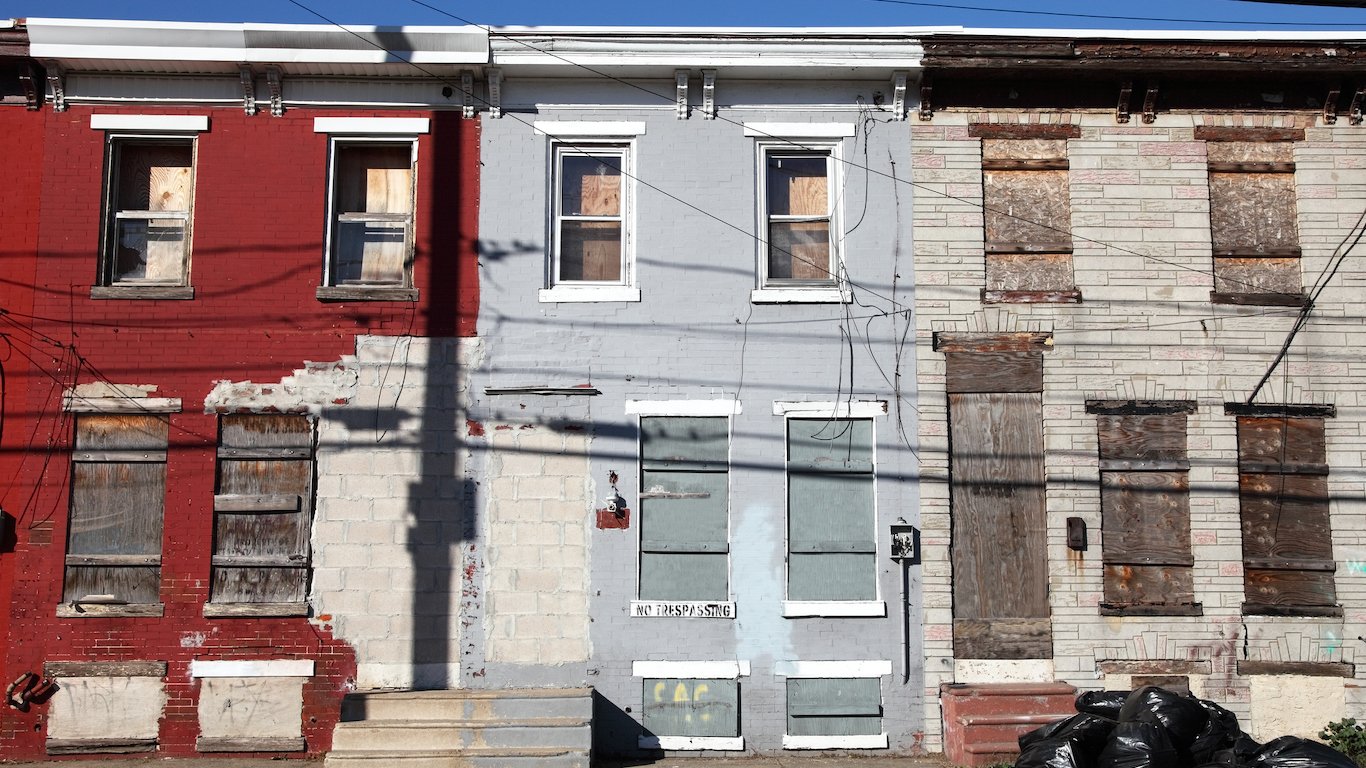

Since the end of the Great Recession, the United States has achieved unprecedented economic growth and reached the lowest unemployment rate in nearly 50 years. This economic growth, however, has disproportionately benefited the wealthiest Americans, leading to a rapid increase in income inequality and — in some parts of the country — worsening conditions for some of the poorest U.S. households.
While since 2011 the share of income earned by the top fifth quintile of households has risen, the share of income earned by the bottom fifth fell slightly. Income inequality is particularly severe in several states — including California, Massachusetts, and Texas — where there is at least one city where the median annual household income is below $40,000 and at least $100,000 less than the median household income in the wealthiest city in the state.
To determine the poorest city in every state, 24/7 Wall St. reviewed median household incomes for the over 600 U.S. cities, towns, villages, municipalities, boroughs, and Census designated places with at least 65,000 residents using data from the U.S. Census Bureau’s 2018 American Community Survey. States in which there were no cities with at least 65,000 residents or with only one place with at least 65,000 residents were excluded from the analysis. Forty-three states fit our criteria.
One of the main determinants of income is educational attainment, as workers with more education are more likely to have high-paying, secure jobs. Nationwide, the typical college graduate earns $54,628 a year, more than twice the median earnings of $24,530 for those who did not graduate high school.
In many of the states on our list, the poorest city also has the smallest share of high school graduates in the state among places with at least 65,000 residents. For more on education, see America’s most and least educated states and the most educated city in every state.
Click here to see the poorest city in every state
Click here to read our methodology

Alabama: Birmingham
> Median household income: $36,395 (state: $49,861)
> Poverty rate: 27.1% (state: 16.8%)
> Median home value: $93,400 (state: $147,900)
> Population: 209,294
[in-text-ad]

Alaska: only one city with 65,000+ people
> Alaska median household income: $74,346
> Alaska poverty rate: 10.9%
> Alaska median home value: $276,100
> Alaska population: 737,438
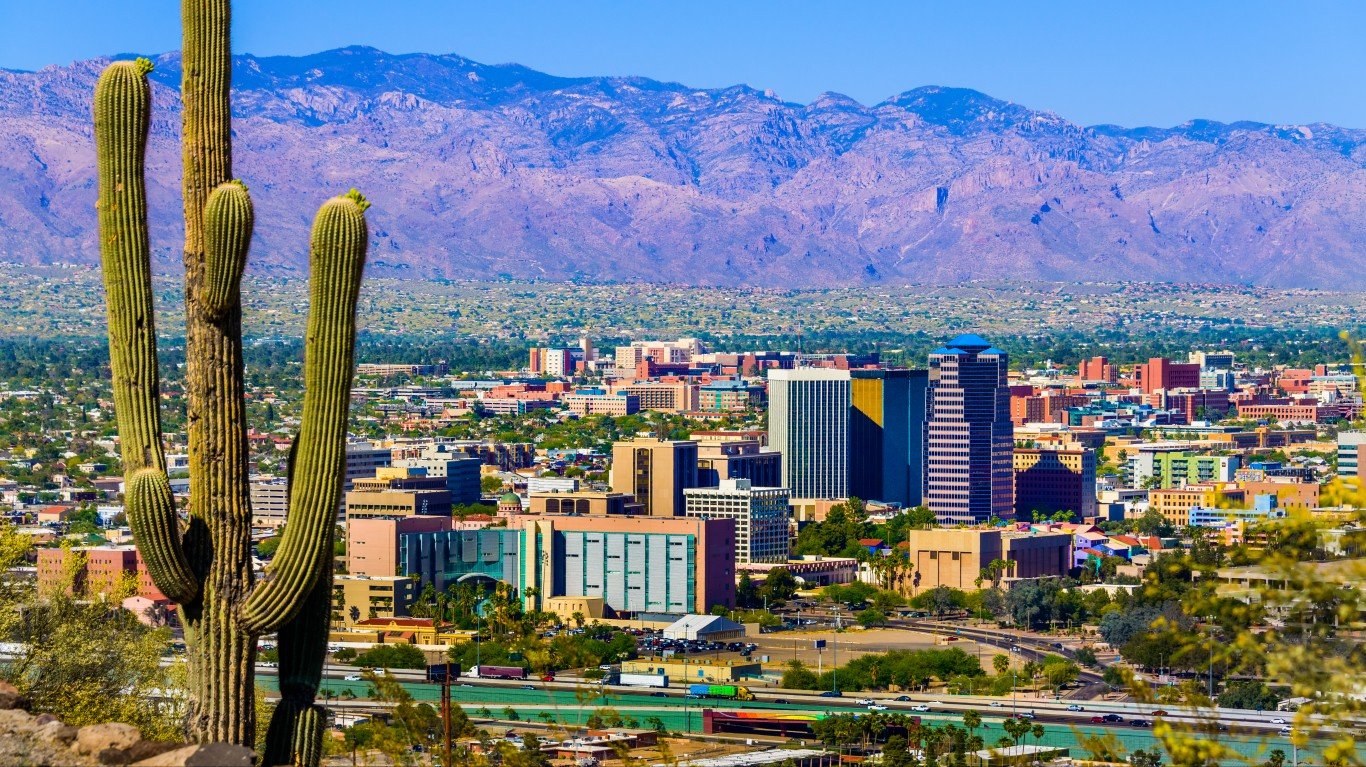
Arizona: Tucson
> Median household income: $43,676 (state: $59,246)
> Poverty rate: 21.9% (state: 14.0%)
> Median home value: $167,800 (state: $241,100)
> Population: 545,987

Arkansas: Fayetteville
> Median household income: $41,890 (state: $47,062)
> Poverty rate: 24.3% (state: 17.2%)
> Median home value: $226,000 (state: $133,100)
> Population: 86,765
[in-text-ad-2]
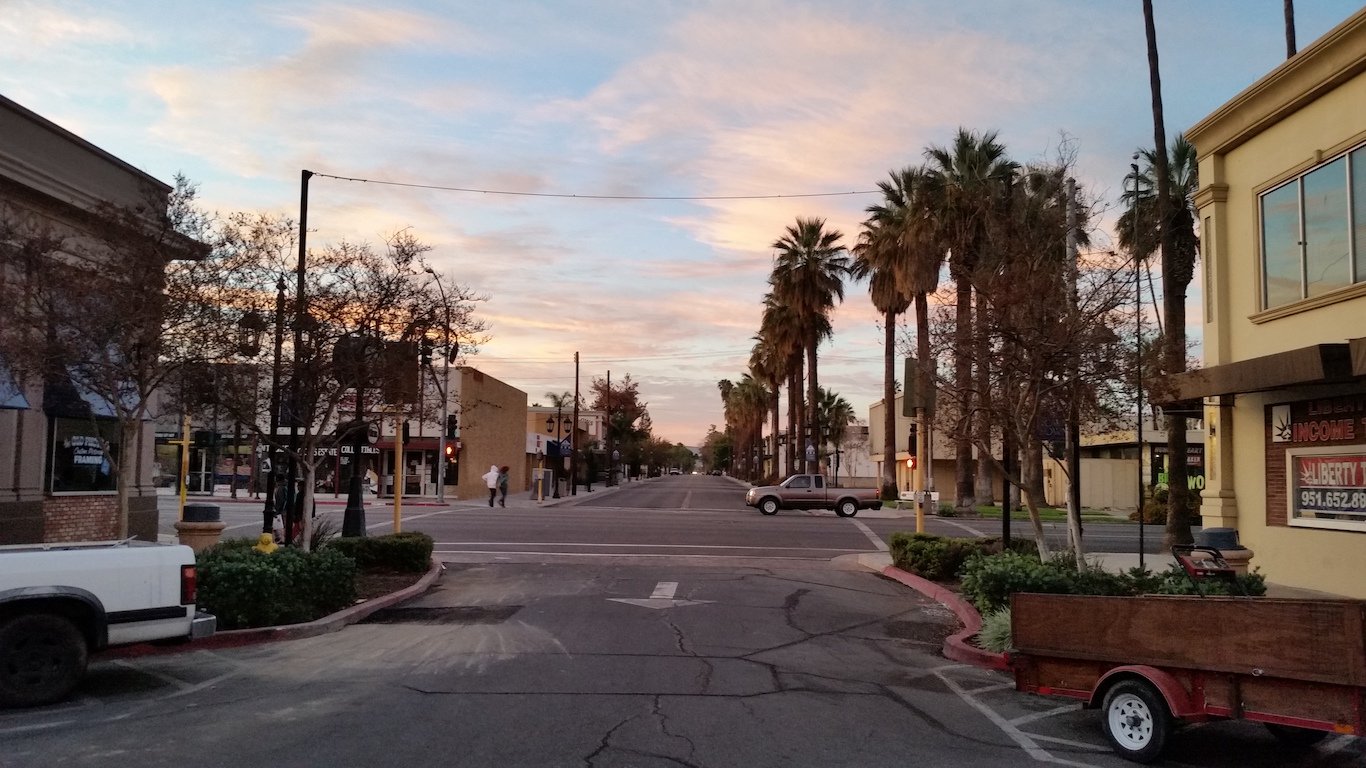
California: Hemet
> Median household income: $39,305 (state: $75,277)
> Poverty rate: 17.0% (state: 12.8%)
> Median home value: $197,700 (state: $546,800)
> Population: 85,291
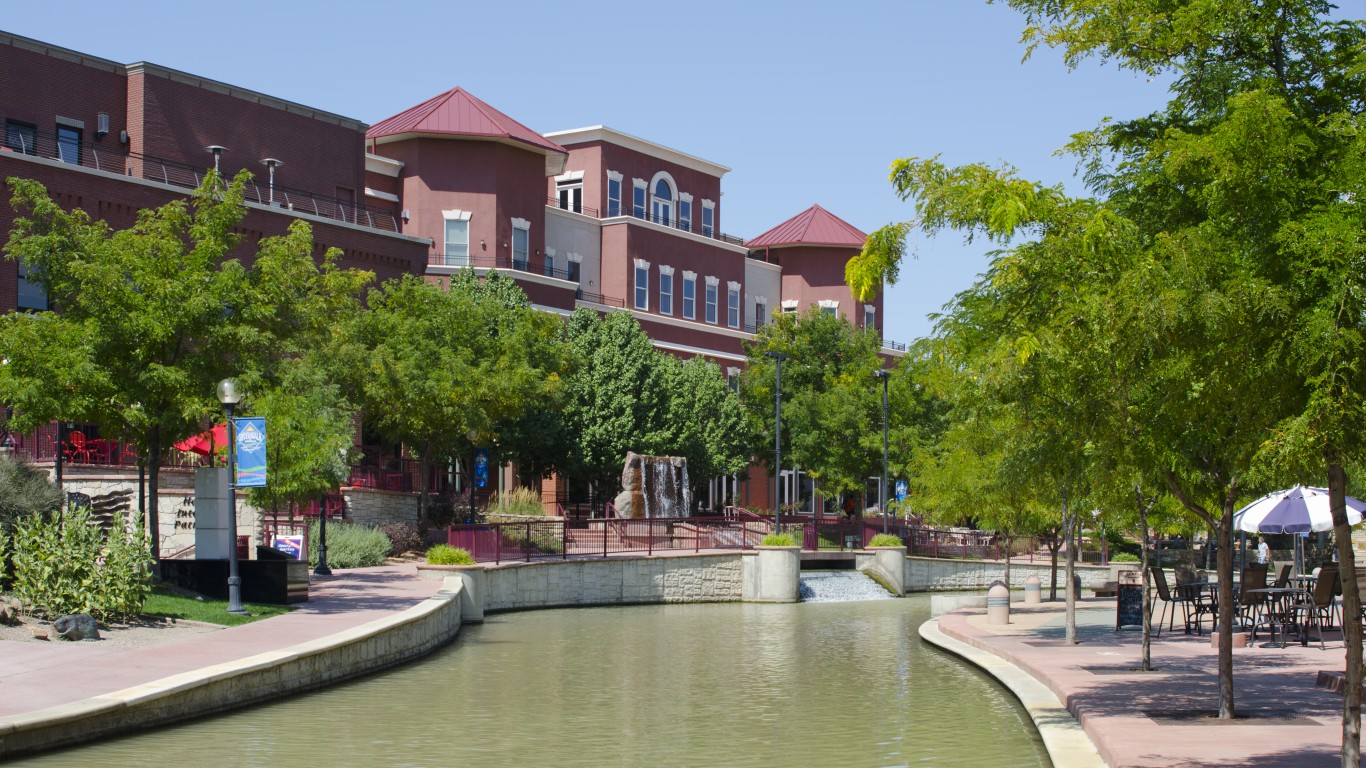
Colorado: Pueblo
> Median household income: $41,012 (state: $71,953)
> Poverty rate: 22.1% (state: 9.6%)
> Median home value: $153,900 (state: $373,300)
> Population: 111,751
[in-text-ad]

Connecticut: Hartford
> Median household income: $30,444 (state: $76,348)
> Poverty rate: 31.1% (state: 10.4%)
> Median home value: $166,200 (state: $277,400)
> Population: 122,591

Delaware: only one city with 65,000+ people
> Delaware median household income: $64,805
> Delaware poverty rate: 12.5%
> Delaware median home value: $255,300
> Delaware population: 967,171
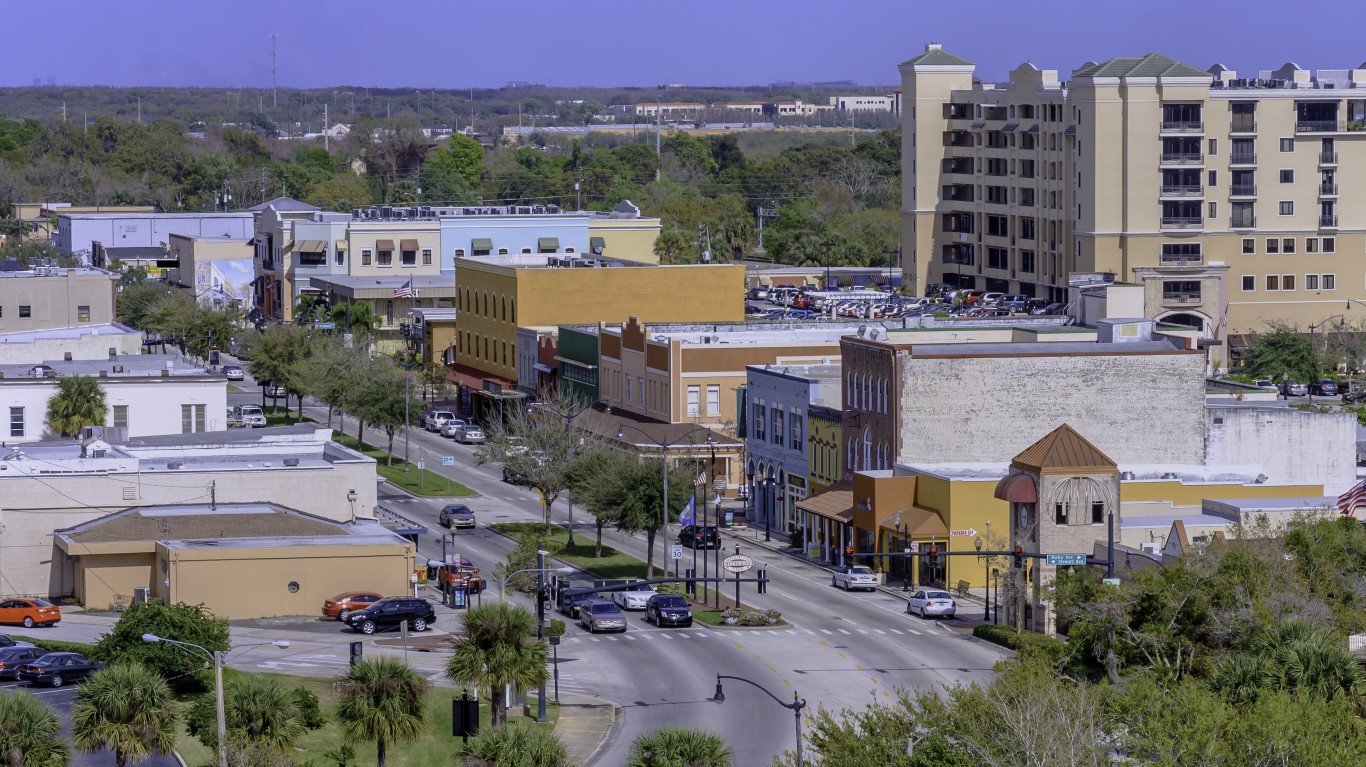
Florida: Kissimmee
> Median household income: $35,574 (state: $55,462)
> Poverty rate: 26.2% (state: 13.6%)
> Median home value: $195,400 (state: $230,600)
> Population: 73,596
[in-text-ad-2]
Georgia: Albany
> Median household income: $35,575 (state: $58,756)
> Poverty rate: 31.8% (state: 14.3%)
> Median home value: $99,100 (state: $189,900)
> Population: 71,646

Hawaii: only one city with 65,000+ people
> Hawaii median household income: $80,212
> Hawaii poverty rate: 8.8%
> Hawaii median home value: $631,700
> Hawaii population: 1.4 million
[in-text-ad]

Idaho: Nampa
> Median household income: $47,997 (state: $55,583)
> Poverty rate: 12.7% (state: 11.8%)
> Median home value: $177,500 (state: $233,100)
> Population: 96,245

Illinois: Rockford
> Median household income: $42,489 (state: $65,030)
> Poverty rate: 24.0% (state: 12.1%)
> Median home value: $92,800 (state: $203,400)
> Population: 147,676
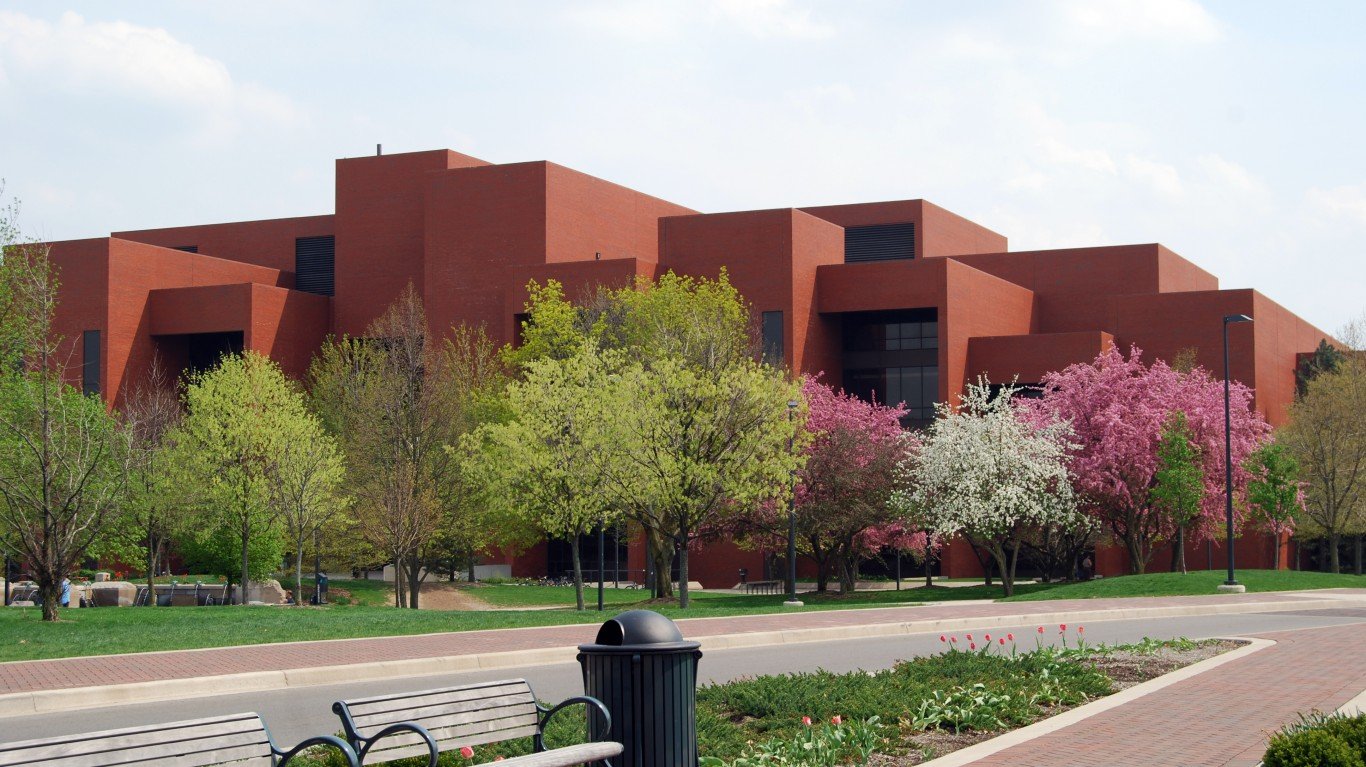
Indiana: Muncie
> Median household income: $32,565 (state: $55,746)
> Poverty rate: 31.2% (state: 13.1%)
> Median home value: $76,100 (state: $147,300)
> Population: 70,178
[in-text-ad-2]

Iowa: Waterloo
> Median household income: $45,646 (state: $59,955)
> Poverty rate: 19.4% (state: 11.2%)
> Median home value: $113,400 (state: $152,000)
> Population: 67,797

Kansas: Topeka
> Median household income: $44,338 (state: $58,218)
> Poverty rate: 17.2% (state: 12.0%)
> Median home value: $109,700 (state: $159,400)
> Population: 125,908
[in-text-ad]

Kentucky: Bowling Green
> Median household income: $38,665 (state: $50,247)
> Poverty rate: 27.6% (state: 16.9%)
> Median home value: $165,300 (state: $148,100)
> Population: 68,393

Louisiana: Shreveport
> Median household income: $36,338 (state: $47,905)
> Poverty rate: 24.4% (state: 18.6%)
> Median home value: $140,600 (state: $167,300)
> Population: 189,149

Maine: only one city with 65,000+ people
> Maine median household income: $55,602
> Maine poverty rate: 11.6%
> Maine median home value: $197,500
> Maine population: 1.3 million
[in-text-ad-2]

Maryland: Baltimore
> Median household income: $51,000 (state: $83,242)
> Poverty rate: 18.4% (state: 9.0%)
> Median home value: $167,800 (state: $324,800)
> Population: 602,495

Massachusetts: Springfield
> Median household income: $32,747 (state: $79,835)
> Poverty rate: 30.2% (state: 10.0%)
> Median home value: $159,200 (state: $400,700)
> Population: 155,029
[in-text-ad]
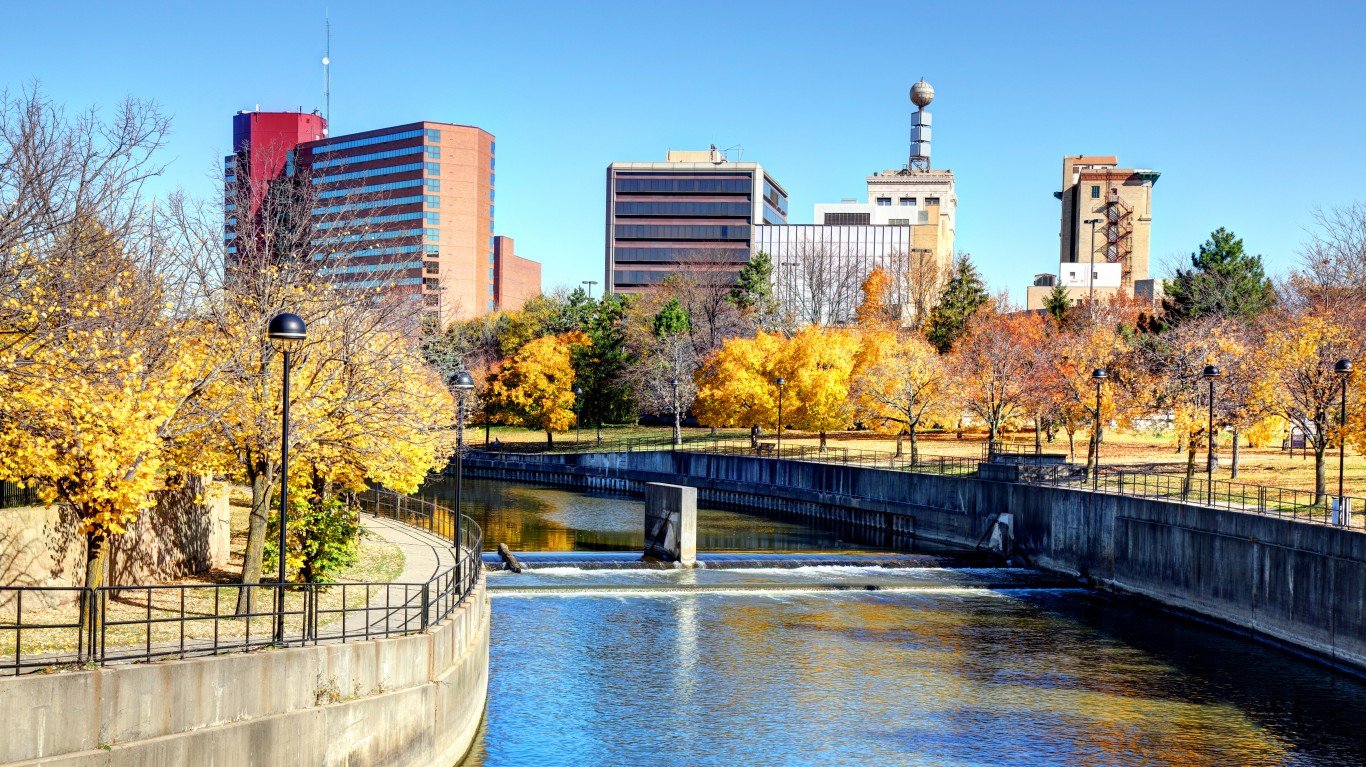
Michigan: Flint
> Median household income: $28,844 (state: $56,697)
> Poverty rate: 34.7% (state: 14.1%)
> Median home value: $31,200 (state: $162,500)
> Population: 95,932

Minnesota: Duluth
> Median household income: $49,050 (state: $70,315)
> Poverty rate: 17.1% (state: 9.6%)
> Median home value: $170,300 (state: $235,400)
> Population: 85,884
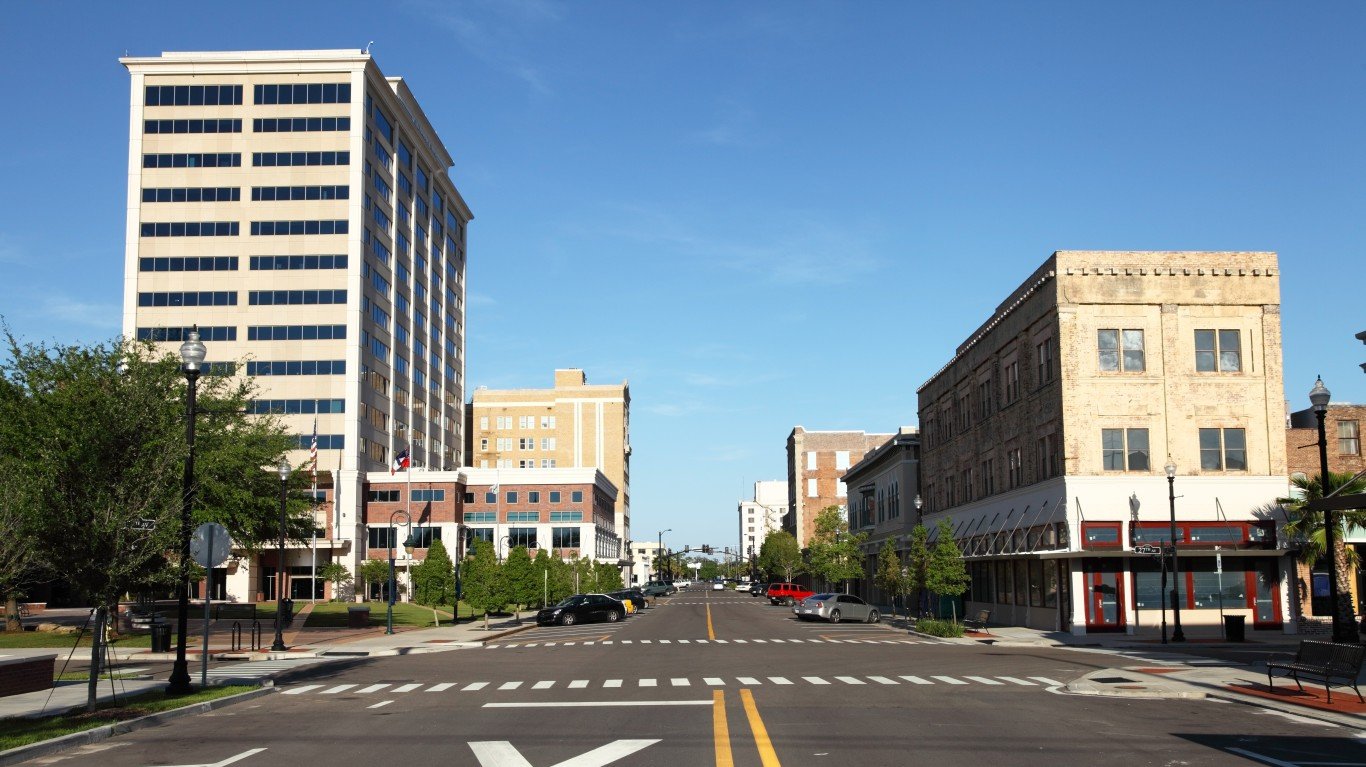
Mississippi: Gulfport
> Median household income: $37,330 (state: $44,717)
> Poverty rate: 29.7% (state: 19.7%)
> Median home value: $134,100 (state: $123,300)
> Population: 71,865
[in-text-ad-2]

Missouri: Springfield
> Median household income: $33,879 (state: $54,478)
> Poverty rate: 22.8% (state: 13.2%)
> Median home value: $120,800 (state: $162,600)
> Population: 168,113

Montana: Missoula
> Median household income: $53,375 (state: $55,328)
> Poverty rate: 16.3% (state: 13.0%)
> Median home value: $304,200 (state: $249,200)
> Population: 74,427
[in-text-ad]

Nebraska: Lincoln
> Median household income: $55,388 (state: $59,566)
> Poverty rate: 13.5% (state: 11.0%)
> Median home value: $173,600 (state: $161,800)
> Population: 287,399
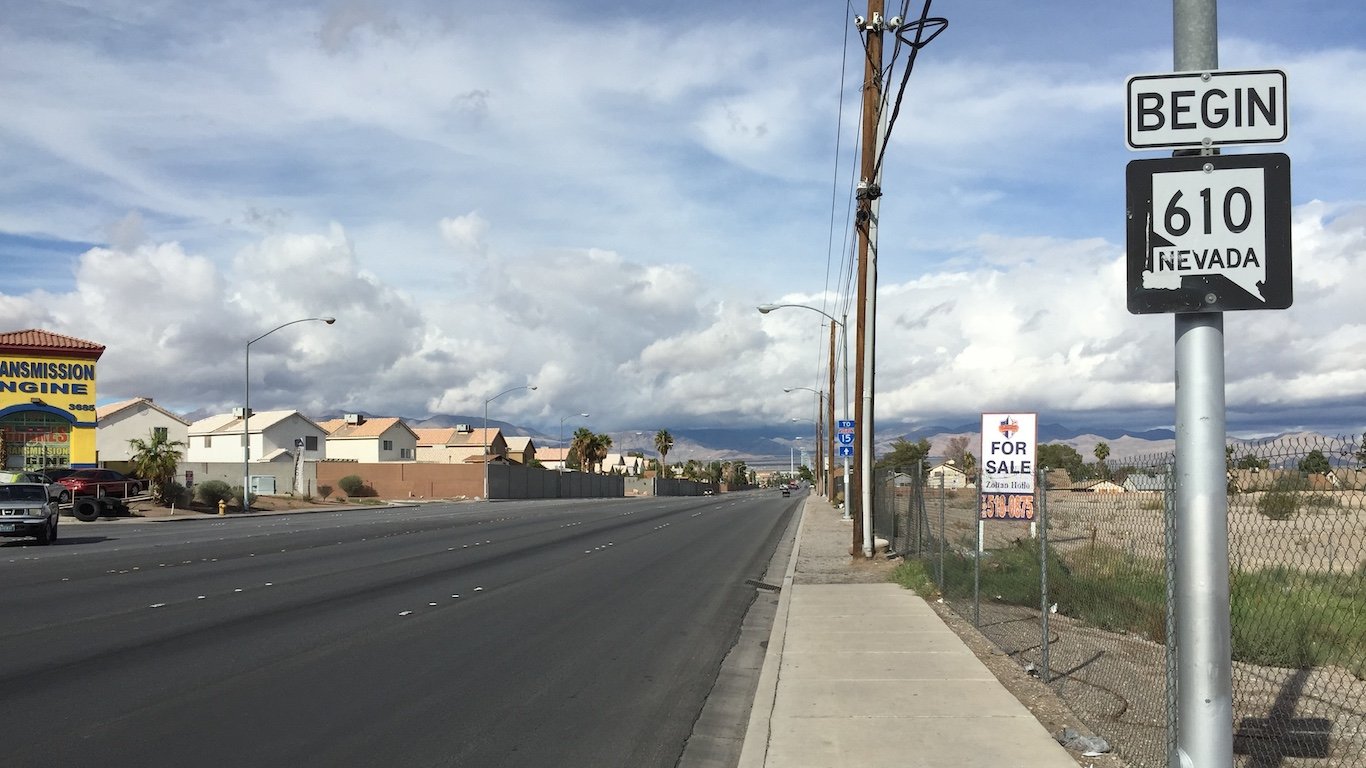
Nevada: Sunrise Manor
> Median household income: $41,342 (state: $58,646)
> Poverty rate: 25.1% (state: 12.9%)
> Median home value: $190,100 (state: $292,200)
> Population: 188,515

New Hampshire: Manchester
> Median household income: $60,232 (state: $74,991)
> Poverty rate: 14.2% (state: 7.6%)
> Median home value: $231,800 (state: $270,000)
> Population: 112,529
[in-text-ad-2]

New Jersey: Camden
> Median household income: $25,928 (state: $81,740)
> Poverty rate: 40.9% (state: 9.5%)
> Median home value: $87,200 (state: $344,000)
> Population: 73,968
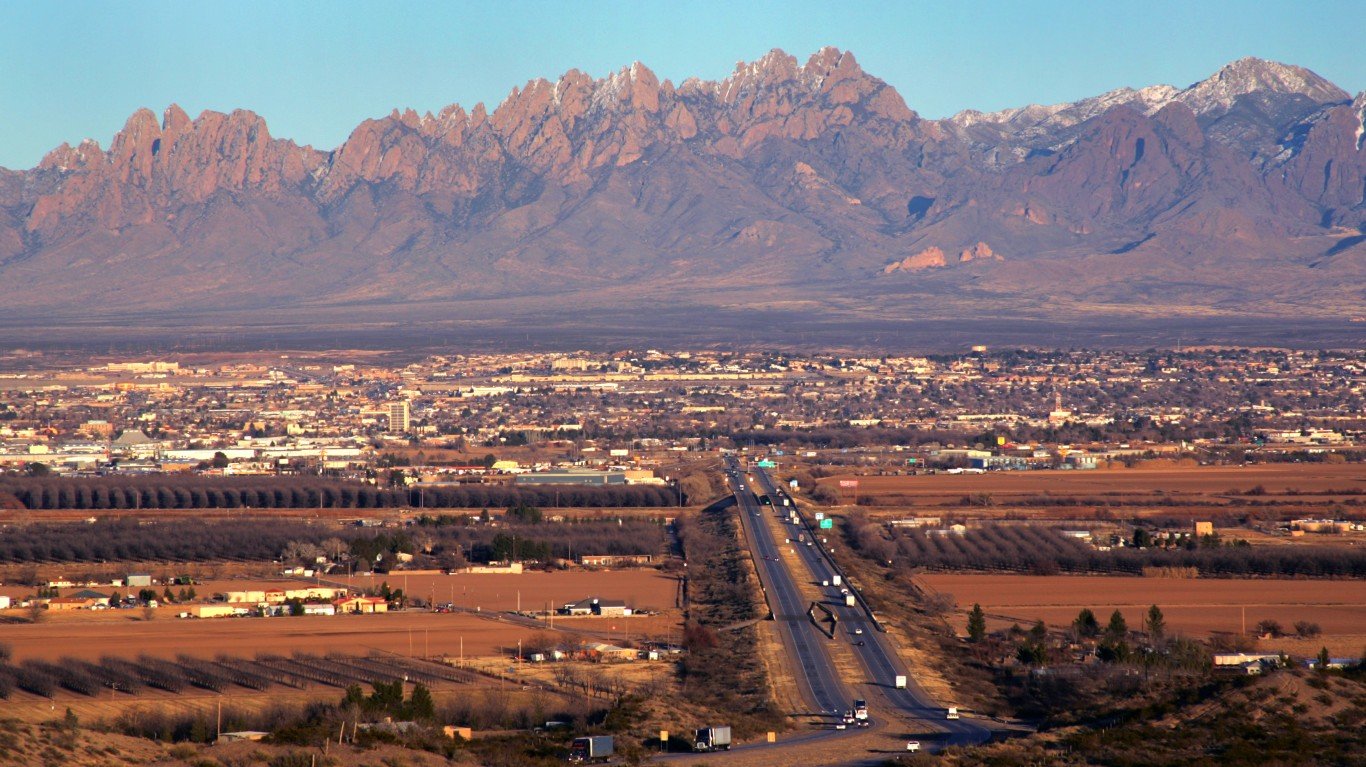
New Mexico: Las Cruces
> Median household income: $35,617 (state: $47,169)
> Poverty rate: 25.0% (state: 19.5%)
> Median home value: $151,500 (state: $174,700)
> Population: 102,929
[in-text-ad]

New York: Rochester
> Median household income: $35,403 (state: $67,844)
> Poverty rate: 31.7% (state: 13.6%)
> Median home value: $82,700 (state: $325,500)
> Population: 206,290
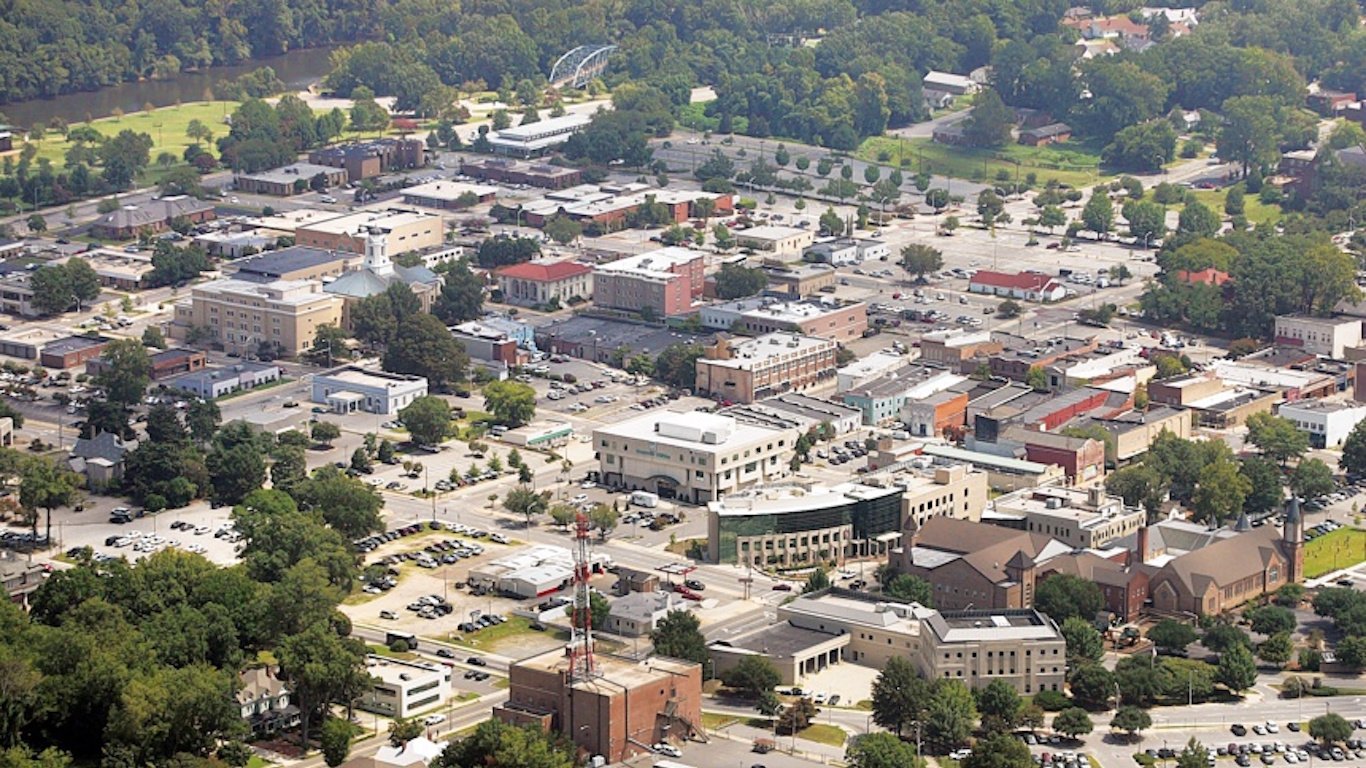
North Carolina: Greenville
> Median household income: $39,234 (state: $53,855)
> Poverty rate: 31.4% (state: 14.0%)
> Median home value: $158,100 (state: $180,600)
> Population: 93,136
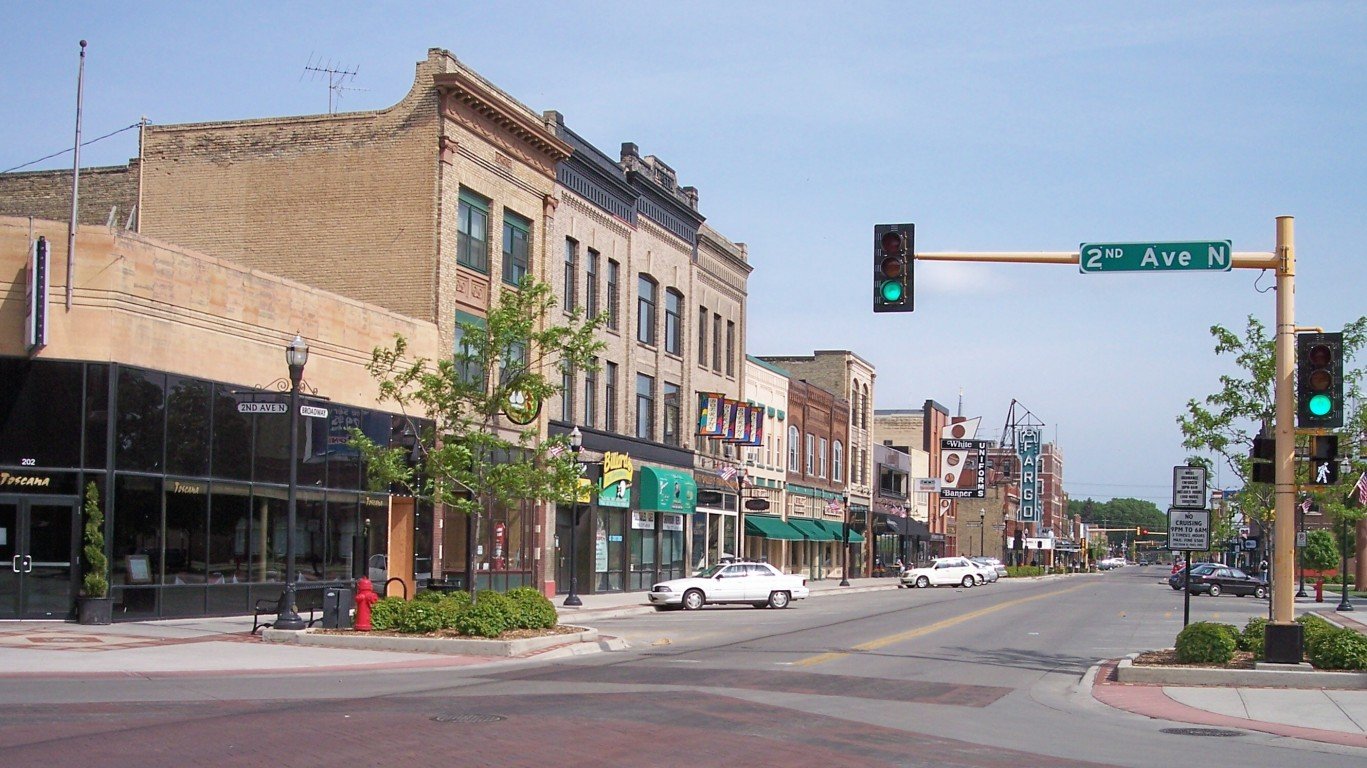
North Dakota: Fargo
> Median household income: $51,839 (state: $63,837)
> Poverty rate: 13.3% (state: 10.7%)
> Median home value: $220,400 (state: $198,700)
> Population: 125,040
[in-text-ad-2]

Ohio: Cleveland
> Median household income: $29,953 (state: $56,111)
> Poverty rate: 33.1% (state: 13.9%)
> Median home value: $71,100 (state: $151,100)
> Population: 383,781

Oklahoma: Lawton
> Median household income: $47,360 (state: $51,924)
> Poverty rate: 17.1% (state: 15.6%)
> Median home value: $106,100 (state: $140,000)
> Population: 92,860
[in-text-ad]

Oregon: Medford
> Median household income: $51,450 (state: $63,426)
> Poverty rate: 17.0% (state: 12.6%)
> Median home value: $273,600 (state: $341,800)
> Population: 82,348

Pennsylvania: Reading
> Median household income: $32,466 (state: $60,905)
> Poverty rate: 32.1% (state: 12.2%)
> Median home value: $67,200 (state: $186,000)
> Population: 88,508

Rhode Island: Providence
> Median household income: $42,347 (state: $64,340)
> Poverty rate: 28.0% (state: 12.9%)
> Median home value: $219,500 (state: $273,800)
> Population: 179,335
[in-text-ad-2]

South Carolina: Columbia
> Median household income: $46,073 (state: $52,306)
> Poverty rate: 24.3% (state: 15.3%)
> Median home value: $181,300 (state: $170,800)
> Population: 133,610

South Dakota: Rapid City
> Median household income: $50,233 (state: $56,274)
> Poverty rate: 17.6% (state: 13.1%)
> Median home value: $186,600 (state: $171,500)
> Population: 75,448
[in-text-ad]

Tennessee: Memphis
> Median household income: $37,199 (state: $52,375)
> Poverty rate: 27.8% (state: 15.3%)
> Median home value: $103,700 (state: $177,500)
> Population: 650,632

Texas: Brownsville
> Median household income: $36,976 (state: $60,629)
> Poverty rate: 31.6% (state: 14.9%)
> Median home value: $92,800 (state: $186,000)
> Population: 183,389

Utah: Provo
> Median household income: $48,575 (state: $71,414)
> Poverty rate: 29.1% (state: 9.0%)
> Median home value: $285,700 (state: $303,300)
> Population: 116,713
[in-text-ad-2]

Vermont: no city with 65,000+ people
> Vermont median household income: $60,782
> Vermont poverty rate: 11.0%
> Vermont median home value: $233,100
> Vermont population: 626,299

Virginia: Lynchburg
> Median household income: $42,389 (state: $72,577)
> Poverty rate: 21.1% (state: 10.7%)
> Median home value: $175,500 (state: $281,700)
> Population: 82,126
[in-text-ad]

Washington: Yakima
> Median household income: $48,942 (state: $74,073)
> Poverty rate: 18.7% (state: 10.3%)
> Median home value: $185,100 (state: $373,100)
> Population: 93,874

West Virginia: no city with 65,000+ people
> West Virginia median household income: $44,097
> West Virginia poverty rate: 17.8%
> West Virginia median home value: $121,300
> West Virginia population: 1.8 million

Wisconsin: Milwaukee
> Median household income: $42,087 (state: $60,773)
> Poverty rate: 24.9% (state: 11.0%)
> Median home value: $126,300 (state: $188,500)
> Population: 592,002
[in-text-ad-2]

Wyoming: no city with 65,000+ people
> Wyoming median household income: $61,584
> Wyoming poverty rate: 11.1%
> Wyoming median home value: $230,500
> Wyoming population: 577,737
Methodology
To determine the poorest city in every state, 24/7 Wall St. reviewed median household incomes for the over 600 U.S. cities, towns, villages, municipalities, boroughs, and Census designated places with at least 65,000 residents using data from the U.S. Census Bureau’s 2018 American Community Survey. States in which there were no cities with at least 65,000 residents or with only one city with at least 65,000 residents were excluded from the analysis. Forty-three states fit our criteria. Data on poverty, median home value, and population are also from the ACS and are one-year estimates for 2018.
Household income includes the income of the householder and all other individuals 15 years and over in the household, and is the sum of the amounts reported separately for wage or salary income; net self-employment income; interest, dividends, net rental, or royalty income; income from estates and trusts; Social Security or retirement income; Supplemental Security Income; public assistance or welfare payments; pensions; and all other income.
City boundaries are defined by the Census Bureau and adhere to the “place” geographical classification. Places can include municipalities, cities, towns, villages, and boroughs, as well as Census Designated Places, which are a statistical designation for unincorporated communities used by the Census Bureau. All figures listed are for 2018. All state figures referenced apply to the state the city is in, and not the average of all states.
Sponsored: Attention Savvy Investors: Speak to 3 Financial Experts – FREE
Ever wanted an extra set of eyes on an investment you’re considering? Now you can speak with up to 3 financial experts in your area for FREE. By simply
clicking here you can begin to match with financial professionals who can help guide you through the financial decisions you’re making. And the best part? The first conversation with them is free.
Click here to match with up to 3 financial pros who would be excited to help you make financial decisions.
Thank you for reading! Have some feedback for us?
Contact the 24/7 Wall St. editorial team.
 24/7 Wall St.
24/7 Wall St. 24/7 Wall St.
24/7 Wall St.
 24/7 Wall St.
24/7 Wall St. 24/7 Wall St.
24/7 Wall St. 24/7 Wall St.
24/7 Wall St.


